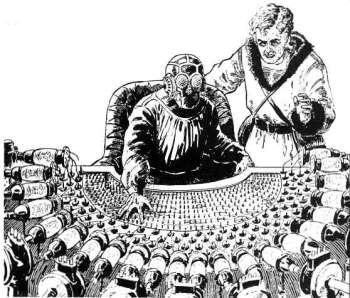When I set out to create the world for my Jump 225 Trilogy, as I’ve written elsewhere, I started with a few technological principles:
- Imagine that we have virtually inexhaustible sources of energy.
- Imagine that we have virtually unlimited computing power.
- Imagine that enough time has passed to allow the scientists to adequately take advantage of these things.
I discovered that starting from these basic principles, there are almost unlimited possibilities. You can easily have a world that’s intermeshed with virtual reality. You can create vast computational systems that have billions and billions of self-directing software programs. You can have pliable architecture that automatically adjusts to fit the needs of the people using it. And so on. It’s actually fairly easy to figure out a technological solution to just about any problem if you don’t have those constraints.
 The interesting questions in such a world, then, are questions of interface. You don’t bother to discuss if you can accomplish your goal anymore, because the answer is almost always “yes.” You just need to know how you’re going to accomplish it, and who’s going to pay for it, and what happens when your perfectly achievable goal clashes with someone else’s perfectly achievable goal.
The interesting questions in such a world, then, are questions of interface. You don’t bother to discuss if you can accomplish your goal anymore, because the answer is almost always “yes.” You just need to know how you’re going to accomplish it, and who’s going to pay for it, and what happens when your perfectly achievable goal clashes with someone else’s perfectly achievable goal.
In other words: you’re at point A. You’d like to be at point B. How do you go about getting there?
Note that when I’m talking about user interface, I’m not talking about how you actually get from point A to point B. The interesting thing about this whole new science of interface is that it doesn’t really matter. We can treat all kinds of science and engineering as a simple black box and just skip right over it. What I’m really concerned with at the moment is how human beings translate their desires into actions in the physical world. How do you tell the black box you want to go from point A to point B?
It seems like a ridiculously easy question, but turns out it’s not. Let’s just take a very simple example of a black box that we all know: the toaster. You might think we already have the perfect user interface for toasting bread. You stick bread in a toaster. There’s one big lever that turns the sucker on, and a dial that tells you how dark you want the toast. How can you improve on that?
Well, wait just a second — the desire we’re trying to accomplish here is to take ordinary bread and turn it into toast. And if you think of user interface as the way you go about accomplishing this, the user interface for toasting bread is much more complicated than you might think.
You need to buy a machine to do the toasting, and you need to plug that machine into a power socket. (The right kind of socket for your part of the world.) And not only do you need a bulky machine that takes up counter space, but you need a dedicated machine that really does nothing else but toast bread and the very small number of specialty foods designed to fit in toaster slots. If you’re trying to toast bread in my house, you need to know that the toaster and the microwave are plugged into the same outlet, and using them at the same time will blow the fuse. You need to experiment with every new toaster you buy to find exactly the right setting — and yet, chances are that you burn toast at least once every couple months. How inefficient is all that?